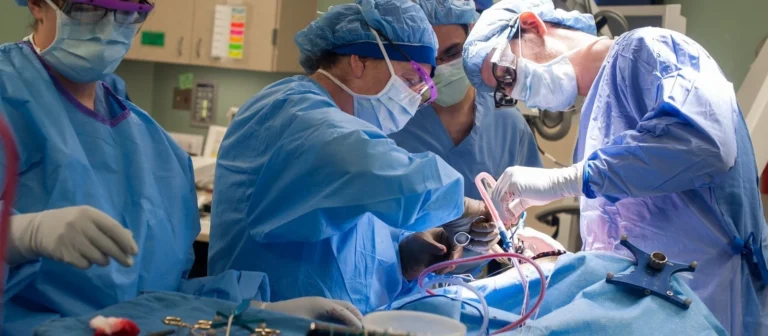Counting Cancer: Unraveling The Promise of Circulating Tumor Cell Tests
Cancer, the dreaded disease that affects millions of lives worldwide, has perplexed scientists and medical professionals for years. However, a breakthrough in cancer diagnostics is now within reach, thanks to the revolutionary advancements in circulating tumor cell (CTC) tests. These tests can potentially transform the way we detect and monitor cancer, offering a noninvasive and convenient alternative to traditional methods.
By analyzing cancer patients’ blood samples, CTC tests can identify and quantify circulating tumor cells, allowing for early detection, personalized treatment plans, and real-time monitoring of treatment efficacy. This cutting-edge technology not only promises to improve cancer patient outcomes but also provides valuable insights into disease progression and the development of drug resistance.
With the ability to capture even rare cancer cells that have spread from the primary tumor, CTC tests offer a glimpse into the complex mechanisms of metastasis. By unraveling the mysteries of these circulating tumor cells, researchers hope to unlock new strategies for targeted therapies and precision medicine.
As we delve deeper into the potential of CTC tests, join us on this fascinating journey of counting cancer and uncovering its secrets. We are inching closer to a future where early cancer detection and effective treatment are accessible to all.
Understanding The Importance of Early Cancer Detection
Early cancer detection is crucial in improving patient outcomes and increasing survival rates. Traditional cancer screening methods, such as mammograms, Pap smears, and colonoscopies, have been effective in detecting certain types of cancer at early stages. However, these methods often have limitations, such as false positives or invasiveness, leading to unnecessary procedures and anxiety for patients.
This is where circulating tumor cell tests offer a groundbreaking solution. By analyzing blood samples, CTC tests can detect the presence of cancer cells even before the appearance of symptoms or the formation of visible tumors. This early detection allows for timely intervention and personalized treatment plans, potentially saving lives and reducing the burden of invasive procedures.
How Circulating Tumor Cell Tests Work
Circulating tumor cell tests rely on the principle that cancer cells shed from tumors into the bloodstream. These cells, known as circulating tumor cells (CTCs), can be isolated and analyzed to provide valuable insights into cancer’s presence, characteristics, and behavior. The process of CTC testing involves several steps:
- Blood Sample Collection: A simple blood draw is performed to collect a sample that contains circulating tumor cells.
- CTC Isolation: Various methods, such as immunomagnetic separation or microfluidic technologies, are utilized to isolate CTCs from the blood sample.
- CTC Enumeration: Once isolated, the CTCs are counted to determine their quantity in the blood sample. This information helps in assessing disease progression and treatment response.
- Molecular Characterization: CTCs can be further analyzed to identify specific genetic mutations or biomarkers that can guide personalized treatment decisions.
Advantages of Circulating Tumor Cell Tests Over Other Cancer Screening Methods
Circulating tumor cell tests offer several advantages over traditional cancer screening methods, making them a promising tool in cancer diagnostics and monitoring. Some of the key benefits include:
- Noninvasive: Unlike invasive procedures such as biopsies, CTC tests only require a simple blood draw, making them more comfortable and convenient for patients.
- Early Detection: CTC tests can detect cancer cells even before visible tumors or symptoms appear, enabling early intervention and potentially improving patient outcomes.
- Real-Time Monitoring: By analyzing CTCs at different stages of treatment, doctors can monitor treatment efficacy in real time, allowing for timely adjustments and personalized treatment plans.
- Capturing Rare Cells: CTC tests have the ability to capture even rare cancer cells that have spread from the primary tumor, providing valuable insights into metastasis and potential targets for treatment.
Current Limitations And Challenges of Circulating Tumor Cell Tests
While circulating tumor cell tests show great promise, some limitations and challenges still need to be addressed for their widespread adoption and utility. Some of the current limitations include:
- Detection Sensitivity: CTC tests may not detect low levels of circulating tumor cells, especially in cases where the tumor burden is minimal. Improving the sensitivity of these tests is crucial for accurate detection and monitoring.
- Standardization: Standardized protocols and methodologies for CTC testing are needed to ensure consistent and reliable results across different laboratories and healthcare settings.
- Cost and Accessibility: CTC tests may be more expensive than traditional screening methods, limiting their accessibility to all patients. Reducing costs and improving affordability are essential for widespread adoption.
- Clinical Validation: Further clinical studies and validation are required to establish CTC tests’ clinical utility and effectiveness in different cancer types and stages.
Promising Research And Advancements In Circulating Tumor Cell Testing
Despite the challenges, ongoing research and advancements in circulating tumor cell testing continue to drive progress in cancer diagnostics and treatment. Researchers are exploring various exciting avenues to enhance the capabilities of CTC tests:
- Rare Cell Enrichment: Novel technologies are being developed to improve the enrichment of rare CTCs from blood samples, increasing the sensitivity and accuracy of detection.
- Molecular Characterization: Advancements in genomic sequencing and molecular profiling techniques enable detailed characterization of CTCs, providing valuable information about specific mutations and potential targets for personalized treatment.
- Liquid Biopsies: CTC tests are part of a broader approach known as liquid biopsies, which also includes the analysis of circulating tumor DNA (ctDNA) and other biomarkers. Integrating multiple components of liquid biopsies can offer a comprehensive picture of cancer and its response to treatment.
- Artificial Intelligence: Machine learning and artificial intelligence algorithms are being developed to analyze large datasets generated from CTC tests, enabling automated detection, classification, and prediction of treatment responses.
Case Studies: Success Stories of Circulating Tumor Cell Tests In Cancer Diagnosis And Treatment
Numerous success stories in cancer diagnosis and treatment exemplify the potential of circulating tumor cell tests. Let’s explore a few notable case studies that highlight the impact of CTC testing:
- Case Study 1: A patient with breast cancer underwent CTC testing before and during treatment. The CTC count decreased significantly after the first cycle of chemotherapy, indicating a positive response to treatment. This real-time monitoring allowed for adjustments in the treatment plan, leading to improved outcomes.
- Case Study 2: CTC testing in a patient with lung cancer revealed the presence of a specific mutation associated with resistance to a targeted therapy. This information guided the selection of an alternative treatment regimen, resulting in a more effective response and prolonged survival.
- Case Study 3: CTC tests detected the presence of circulating tumor cells in a patient with prostate cancer, indicating a higher risk of metastasis. Based on this information, the treatment plan was modified to include additional therapies targeting the potential spread of cancer, leading to better disease control.
Integrating Circulating Tumor Cell Tests Into Personalized Cancer Treatment Plans
The information provided by circulating tumor cell tests can significantly impact the development of personalized cancer treatment plans. By understanding the characteristics and behavior of cancer cells, doctors can tailor treatment strategies to each patient’s individual needs. Here are some ways CTC testing can be integrated into personalized cancer care:
- Treatment Selection: Molecular characterization of CTCs can identify specific genetic mutations or biomarkers that can guide the selection of targeted therapies or immunotherapies, increasing treatment effectiveness.
- Treatment Monitoring: Regular CTC testing allows for real-time monitoring of treatment response, enabling early identification of resistance or disease progression. This information helps doctors make timely adjustments to treatment plans, improving outcomes.
- Minimal Residual Disease Detection: CTC tests can detect minimal residual disease after surgery or other treatments, providing valuable information about the risk of recurrence and the need for further interventions.
- Drug Resistance Monitoring: By tracking changes in CTC characteristics over time, doctors can identify the emergence of drug resistance and switch to alternative treatment options before disease progression occurs.
The Future of Circulating Tumor Cell Tests And Their Potential Impact On Cancer Care
The future of circulating tumor cell tests holds immense potential for revolutionizing cancer detection and treatment. Ongoing advancements, research, and collaborations are paving the way for further breakthroughs:
- Enhanced Sensitivity: Continued efforts to improve the sensitivity of CTC tests will enable the detection of even lower levels of circulating tumor cells, enhancing early detection capabilities.
- Multi-Omic Analysis: Integration of CTC testing with other liquid biopsy components, such as ctDNA analysis and proteomics, will provide a comprehensive view of cancer biology, leading to more effective treatment strategies.
- Clinical Trials and Validation: Large-scale clinical trials are underway to validate CTC tests’ clinical utility and effectiveness in different cancer types and stages. These trials will provide robust evidence to support the integration of CTC testing into standard cancer care protocols.
- Patient-Centric Approach: The future of CTC testing will focus on improving patient experience and accessibility. Efforts to reduce costs, streamline workflows, and enhance the user-friendliness of CTC tests will make them more widely available to patients.
Conclusion: The Role of Circulating Tumor Cell Tests In Revolutionizing Cancer Detection And Treatment
Circulating tumor cell tests have emerged as game-changers in cancer diagnostics and treatment. By offering noninvasive, real-time monitoring and personalized insights into the behavior of cancer cells, these tests hold immense promise for improving patient outcomes and transforming cancer care. As we continue unraveling the secrets of cancer by counting its cells, we move closer to a future where early cancer detection and effective treatment are accessible to all. The journey of counting cancer continues, and the potential of circulating tumor cell tests is boundless.






